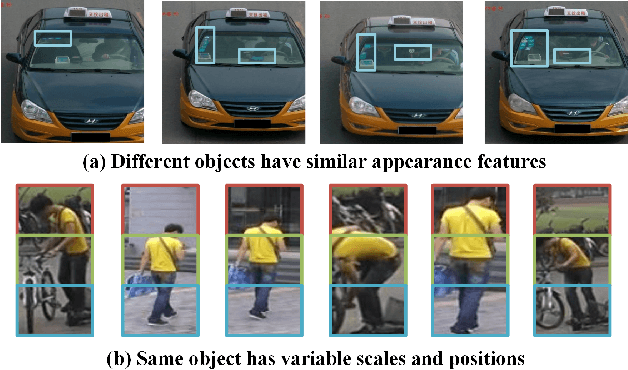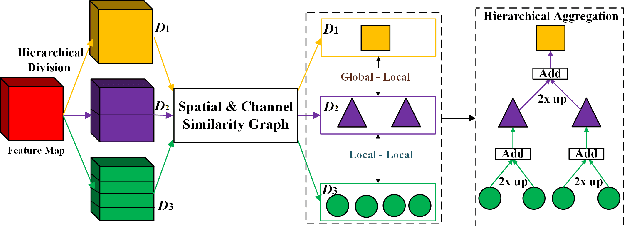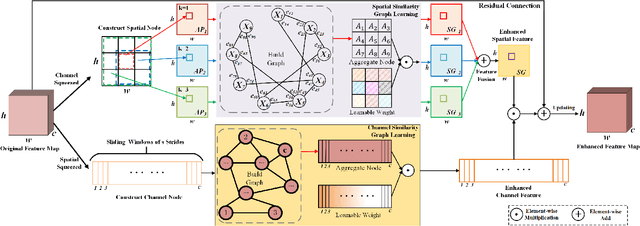Mengwan Wei
HSGNet: Object Re-identification with Hierarchical Similarity Graph Network
Nov 10, 2022



Abstract:Object re-identification method is made up of backbone network, feature aggregation, and loss function. However, most backbone networks lack a special mechanism to handle rich scale variations and mine discriminative feature representations. In this paper, we firstly design a hierarchical similarity graph module (HSGM) to reduce the conflict of backbone and re-identification networks. The designed HSGM builds a rich hierarchical graph to mine the mapping relationships between global-local and local-local. Secondly, we divide the feature map along with the spatial and channel directions in each hierarchical graph. The HSGM applies the spatial features and channel features extracted from different locations as nodes, respectively, and utilizes the similarity scores between nodes to construct spatial and channel similarity graphs. During the learning process of HSGM, we utilize a learnable parameter to re-optimize the importance of each position, as well as evaluate the correlation between different nodes. Thirdly, we develop a novel hierarchical similarity graph network (HSGNet) by embedding the HSGM in the backbone network. Furthermore, HSGM can be easily embedded into backbone networks of any depth to improve object re-identification ability. Finally, extensive experiments on three large-scale object datasets demonstrate that the proposed HSGNet is superior to state-of-the-art object re-identification approaches.
A Competitive Method to VIPriors Object Detection Challenge
Apr 19, 2021



Abstract:In this report, we introduce the technical details of our submission to the VIPriors object detection challenge. Our solution is based on mmdetction of a strong baseline open-source detection toolbox. Firstly, we introduce an effective data augmentation method to address the lack of data problem, which contains bbox-jitter, grid-mask, and mix-up. Secondly, we present a robust region of interest (ROI) extraction method to learn more significant ROI features via embedding global context features. Thirdly, we propose a multi-model integration strategy to refinement the prediction box, which weighted boxes fusion (WBF). Experimental results demonstrate that our approach can significantly improve the average precision (AP) of object detection on the subset of the COCO2017 dataset.
 Add to Chrome
Add to Chrome Add to Firefox
Add to Firefox Add to Edge
Add to Edge